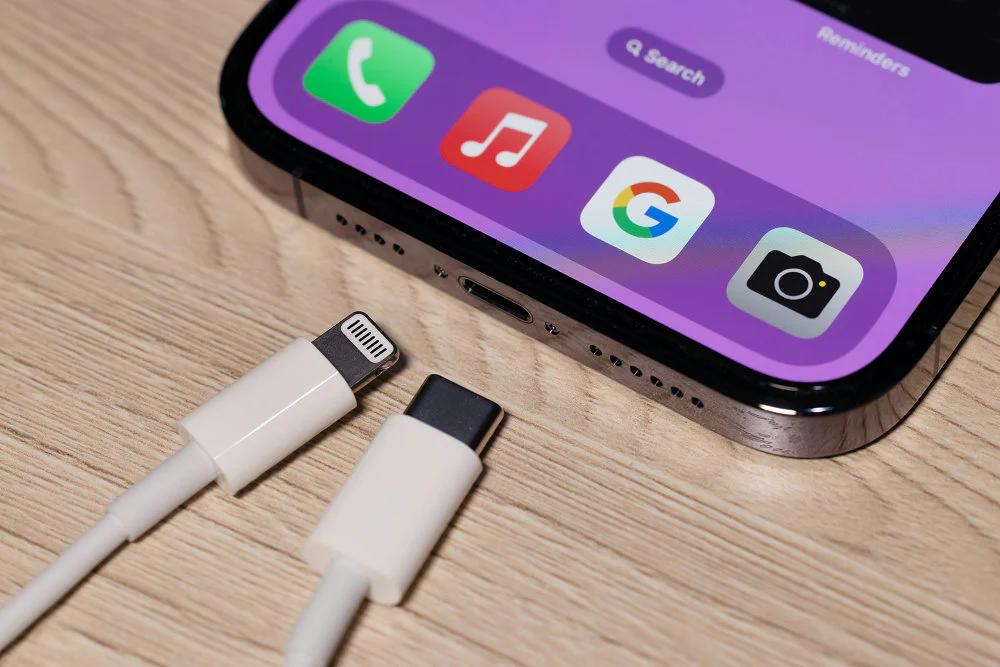When it comes to charging your iPhone, you may have come across two primary charging connector options: USB-C and Lightning. Both connectors offer unique benefits and features, but which one is best for your iPhone? In this article, we’ll compare USB-C and Lightning chargers to help you make an informed decision about which charging option is right for you.

USB-C Chargers
USB-C, or USB Type-C, is a versatile and widely adopted charging connector that offers several advantages for iPhone users. Here are some key features of USB-C chargers:
1. Faster Charging Speeds
One of the primary advantages of USB-C chargers is their ability to deliver faster charging speeds compared to Lightning chargers. USB-C chargers support higher power output levels, allowing your iPhone to charge more quickly. With a USB-C charger, you can top up your iPhone’s battery significantly faster, reducing downtime and ensuring that your device is always ready when you need it.
2. Versatility and Compatibility
USB-C chargers offer greater versatility and compatibility with a wide range of devices, including iPhones, iPads, MacBooks, and Android smartphones. This means that you can use a single USB-C fast charger for iphone to power up multiple devices, simplifying your charging setup and reducing the need for multiple chargers and cables. Additionally, many modern laptops and power banks feature USB-C ports, making it easy to charge your iPhone on the go.
3. Reversible Connector
USB-C connectors feature a reversible design, allowing you to plug them into your iPhone in either orientation. This eliminates the frustration of trying to plug in your charger the right way and ensures a hassle-free charging experience every time. With a USB-C charger, you can quickly and easily connect your iPhone without worrying about damaging the connector.
Lightning Chargers
Lightning is Apple’s proprietary charging connector, specifically designed for use with iPhones, iPads, and iPods. While Lightning chargers offer certain advantages, they also have limitations compared to USB-C chargers. Here are some key features of Lightning chargers:
1. Apple Compatibility
One of the primary advantages of Lightning chargers is their compatibility with Apple devices. Since Lightning is Apple’s proprietary connector, it is the standard charging connector for iPhones, iPads, and iPods. This means that if you own an iPhone, you likely already have a Lightning charger that came with your device, making it a convenient and readily available charging option.
2. Established Ecosystem
Apple has built an extensive ecosystem around the Lightning connector, including a wide range of accessories such as charging docks, car chargers, and battery cases. If you prefer to stick with Apple-branded accessories or have invested in Lightning-based accessories, using a Lightning charger may be the most convenient option for you. Additionally, Lightning chargers are widely available from Apple and third-party manufacturers.
3. Compatibility with Older Devices
Lightning chargers are backward compatible with older iPhone models, meaning that you can use a Lightning charger to charge iPhones released in previous years. This makes Lightning chargers a versatile and reliable charging option for users with older devices who may not have upgraded to newer models with USB-C compatibility.
Conclusion
So both USB-C and Lightning chargers offer unique benefits and features for charging your iPhone. USB-C chargers provide faster charging speeds, greater versatility, and compatibility with a wide range of devices, while Lightning chargers offer Apple compatibility, an established ecosystem, and backward compatibility with older devices. Ultimately, the best charger for your iPhone depends on your specific needs and preferences.